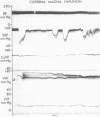Abstract
Pressure changes within the venous outflow tract from the brain were studied in anaesthetized baboons. Segmental vascular resistance changes were also calculated and the results correlated with the changes in cerebral blood flow, measured by the 133Xenon clearance method. Three different methods were used to raise intracranial pressure: cisterna magna infusion, a supratentorial subdural balloon, and an infratentorial subdural balloon. A close correlation was found between the cortical vein pressure and intracranial pressure with all methods of raising intracranial pressure: the overall correlation coefficient was 0·98. In the majority of animals sagittal sinus pressure showed little change through a wide range of intracranial pressure. In three of the six animals in the cisterna magna infusion group, however, sagittal sinus pressure increased to levels approaching the intracranial pressure during the later stages of intracranial hypertension. Jugular venous pressure showed little change with increasing intracranial pressure. The relationship between cerebral prefusion pressure and cerebral blood flow differed according to the method of increasing intracranial pressure. This was due to differing patterns of change in prevenous vascular resistance as venous resistance increased progressively with increasing pressure in all three groups. The present results confirm, therefore, the validity of the current definition of cerebral perfusion pressure—that is, cerebral perfusion pressure is equal to mean arterial pressure minus mean intracranial pressure—by demonstrating that intracranial pressure does represent the effective cerebral venous outflow pressure.
Full text
PDF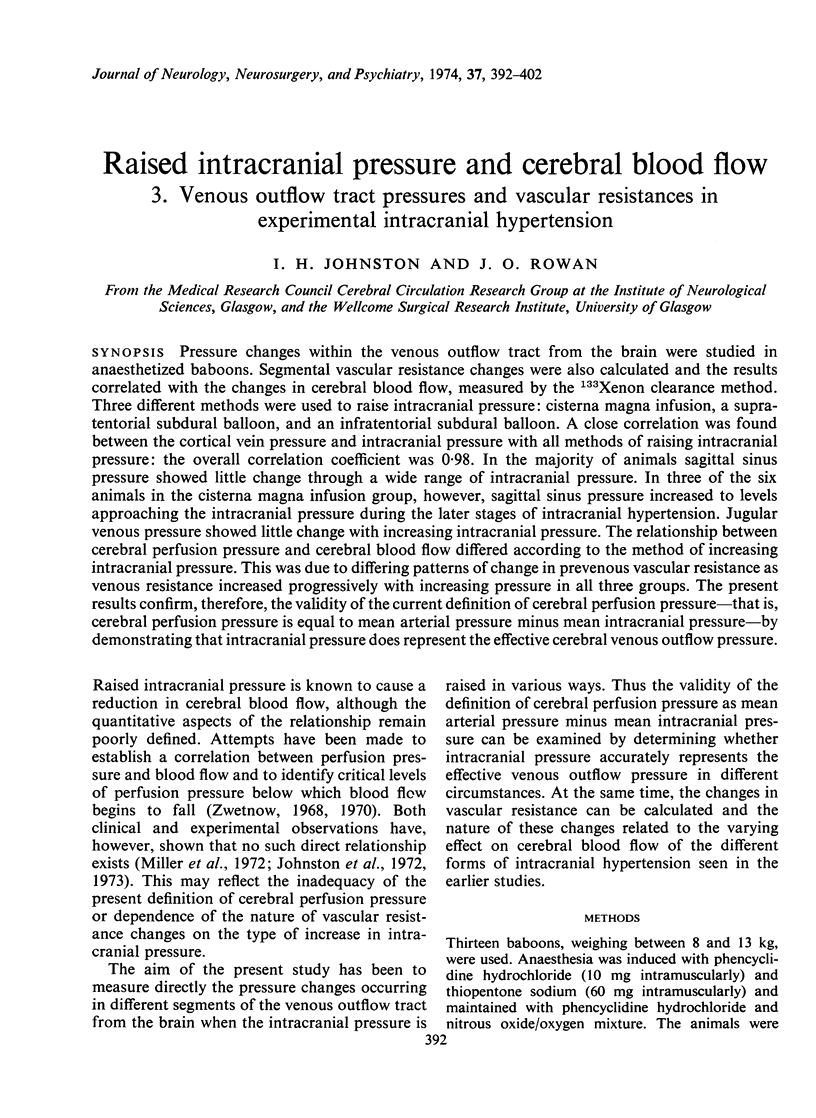
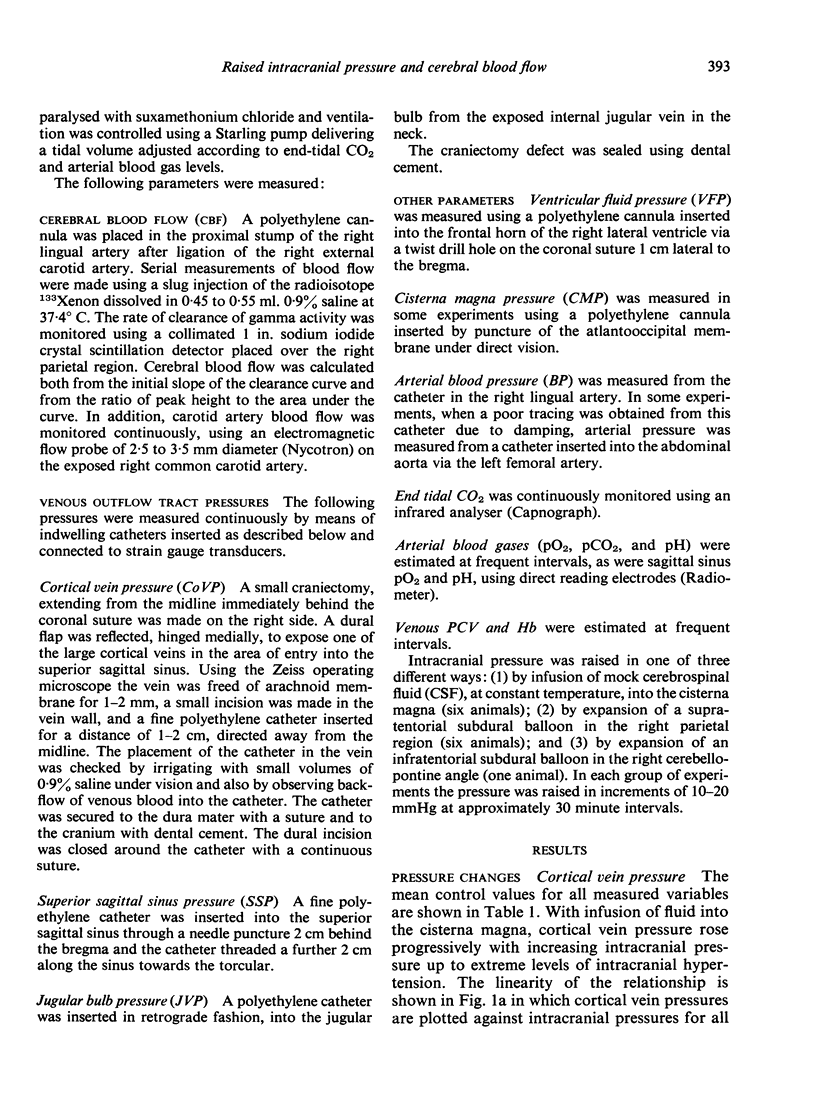
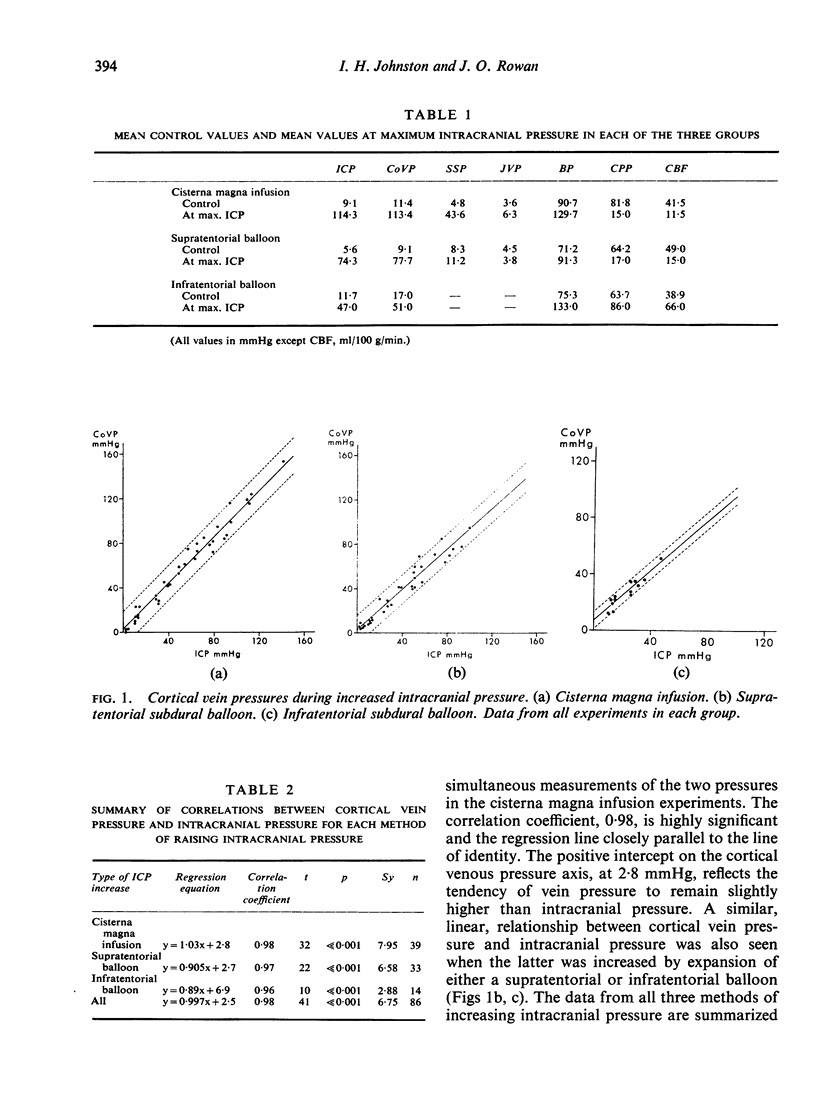
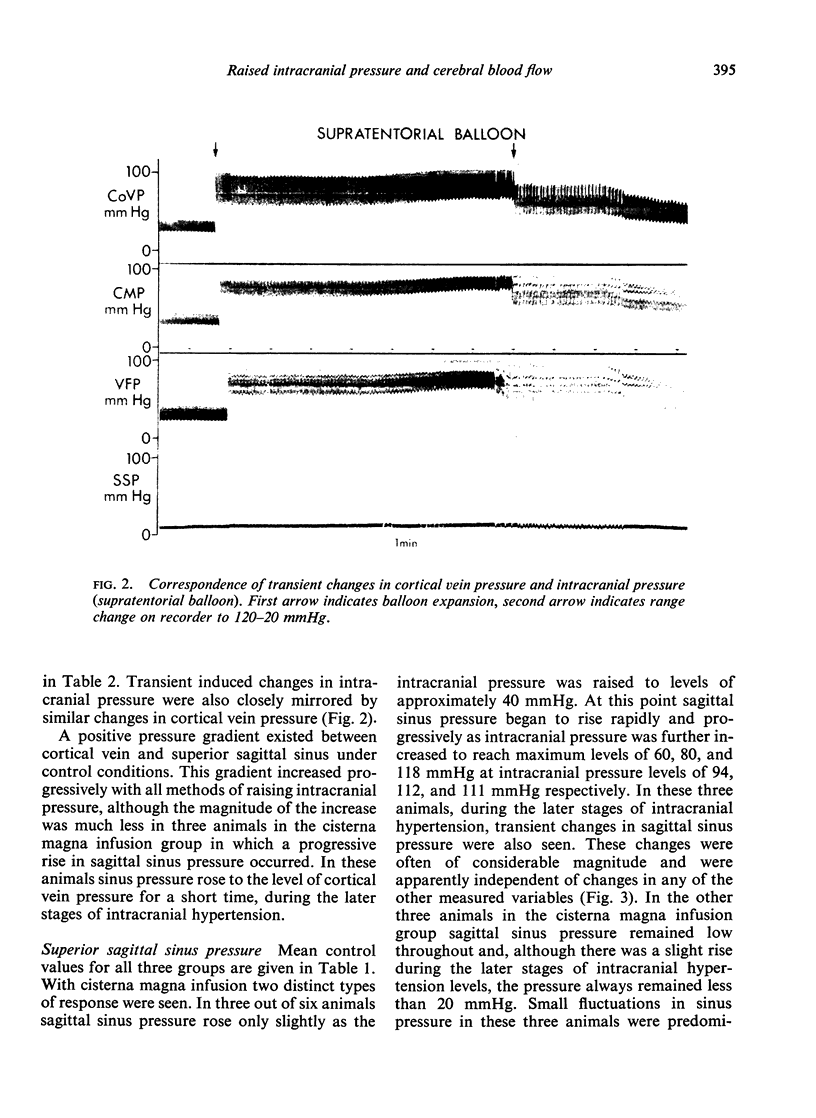
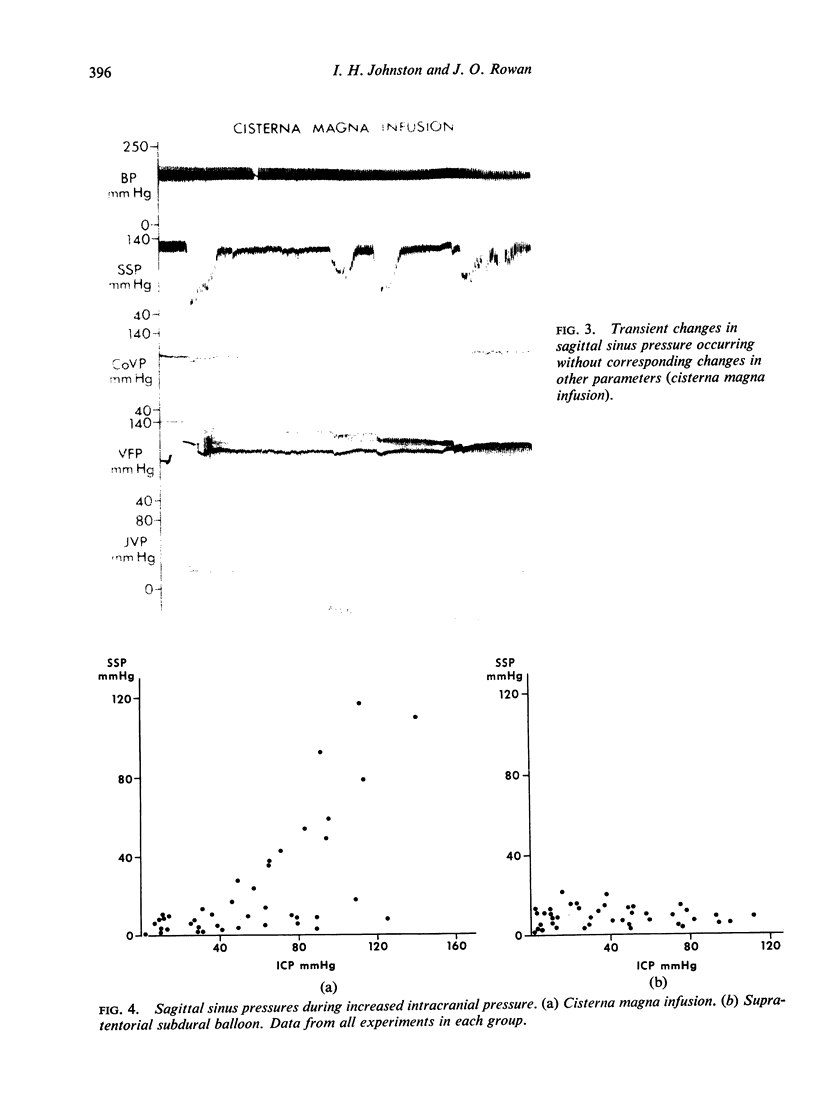
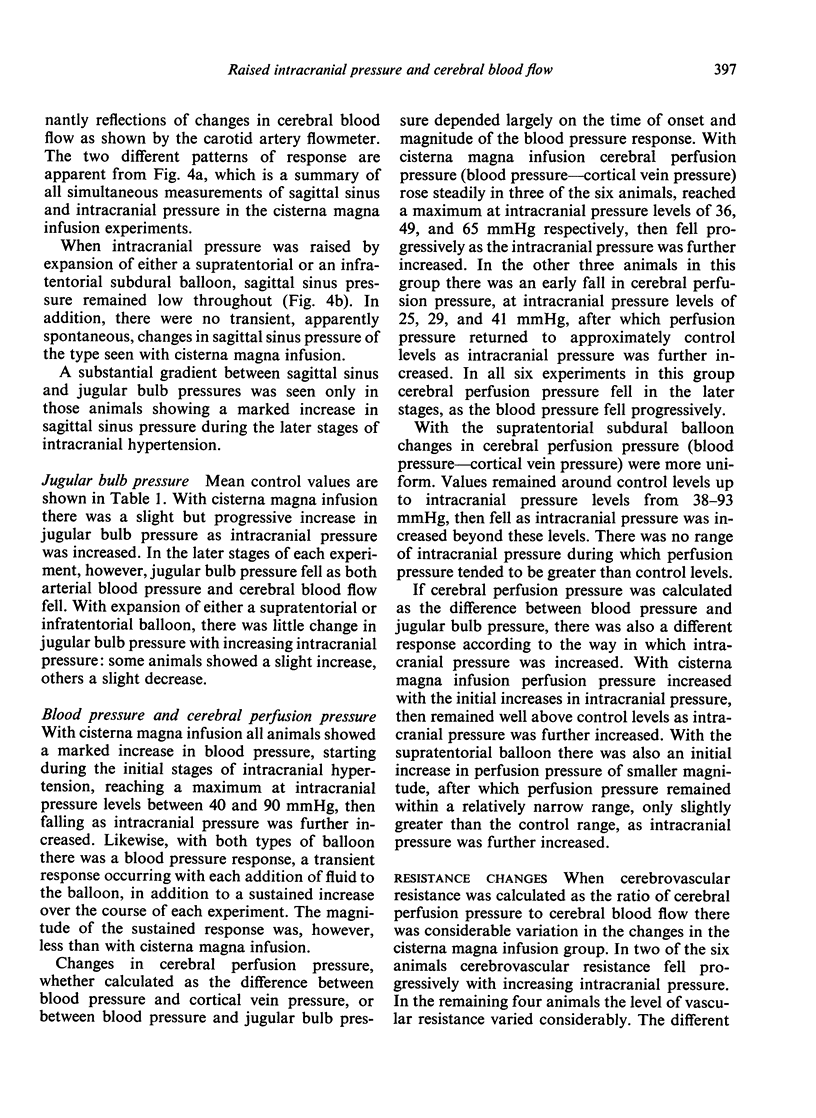
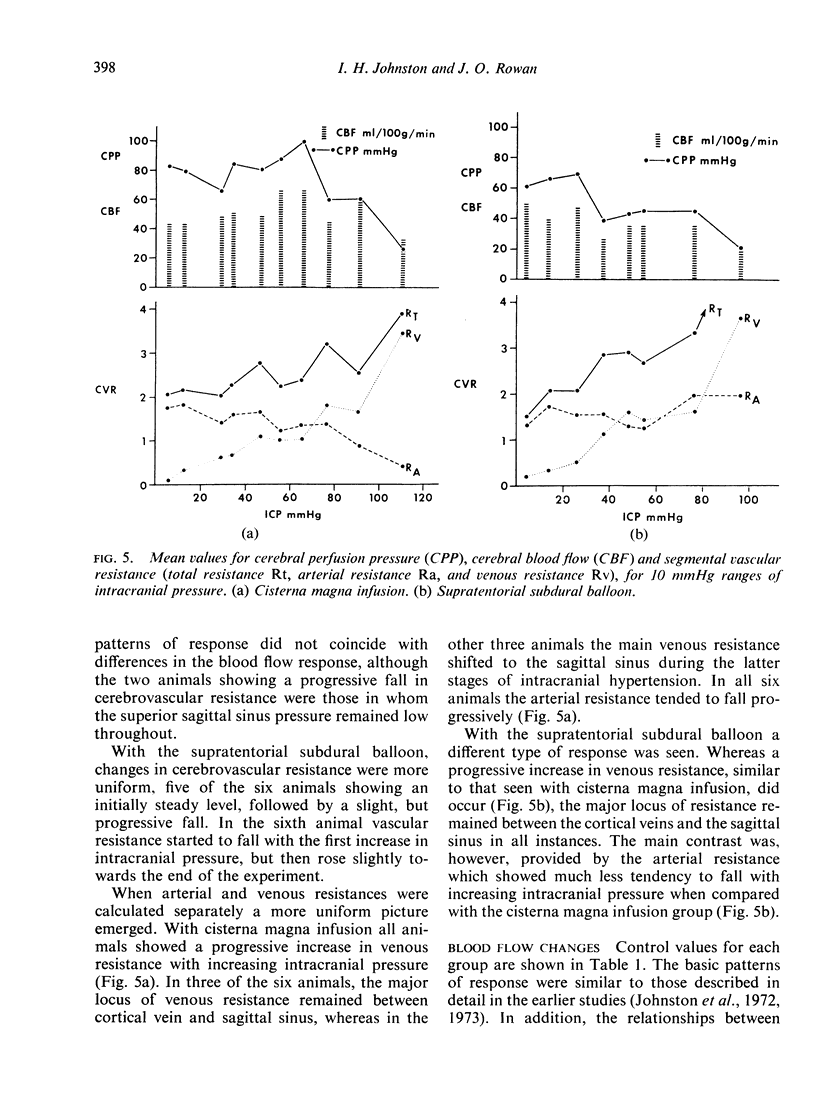
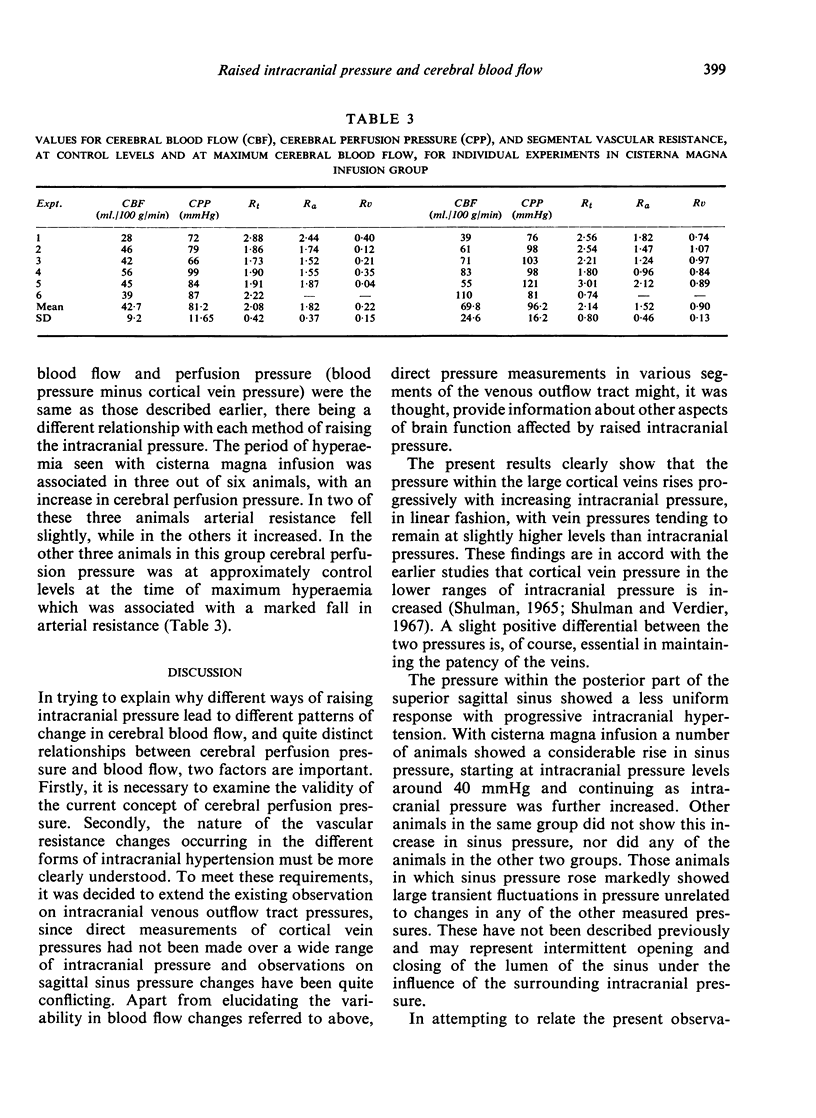
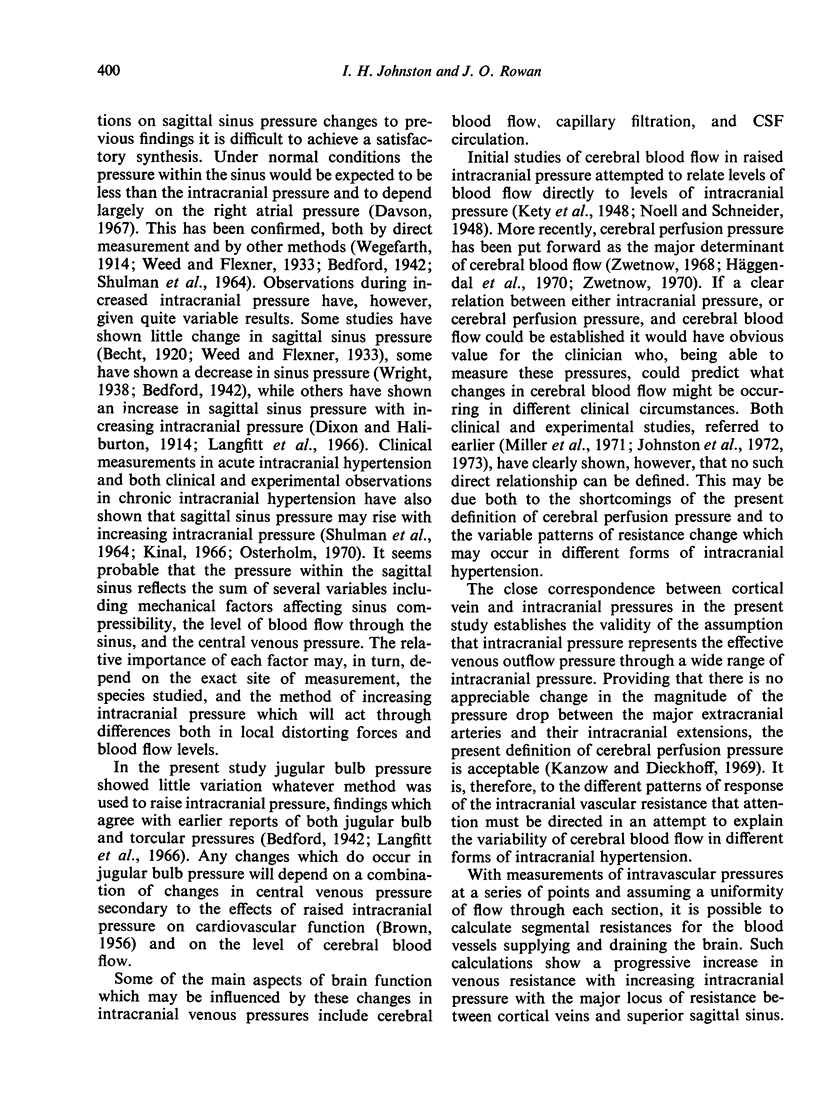
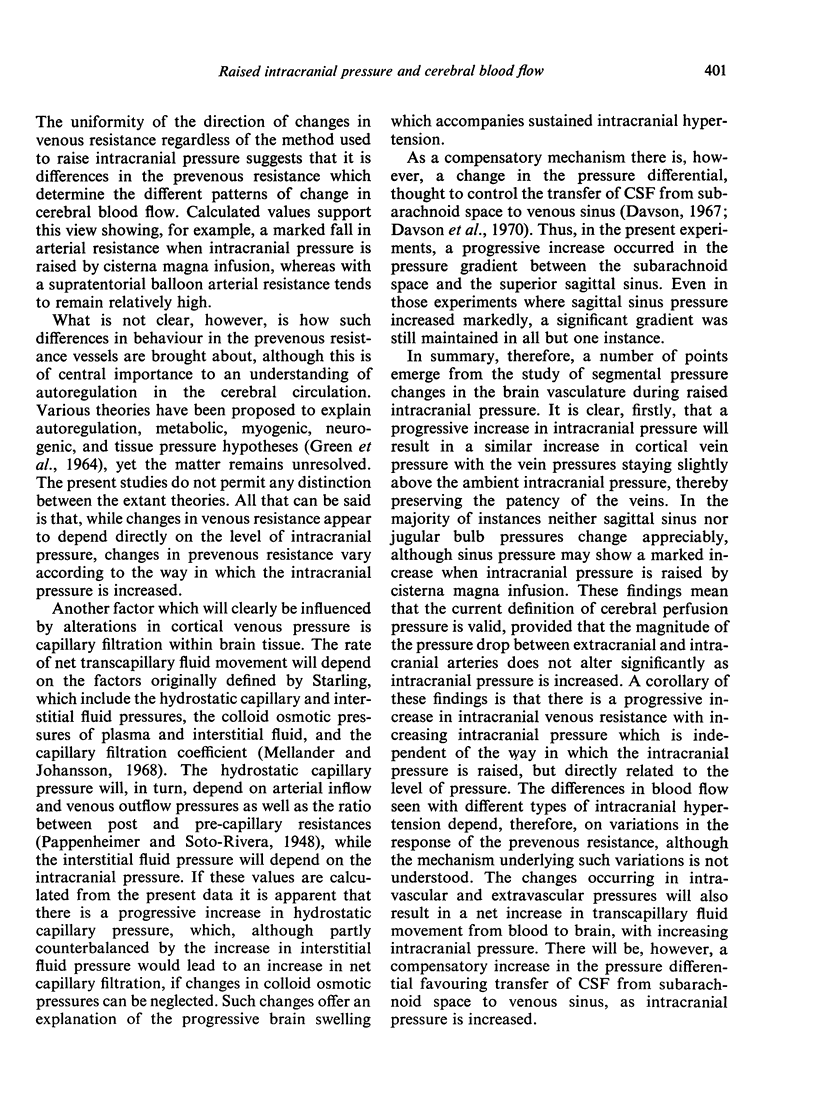
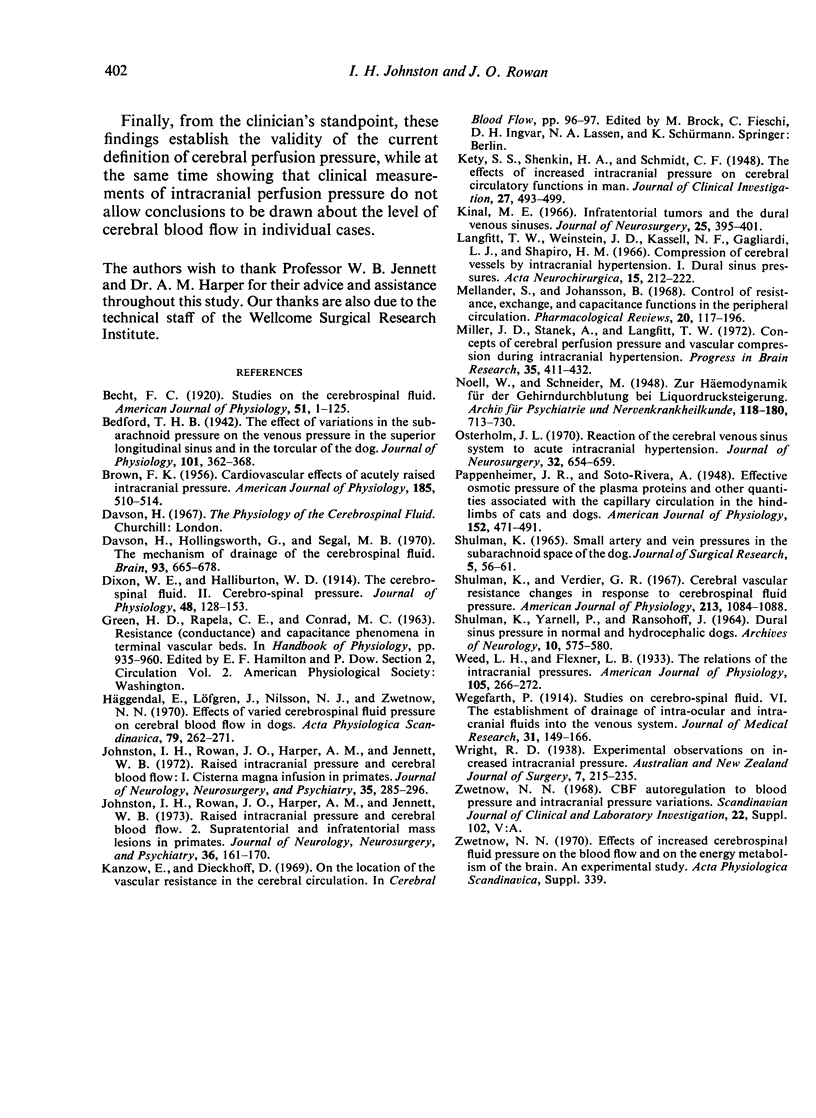
Images in this article
Selected References
These references are in PubMed. This may not be the complete list of references from this article.
- BROWN F. K. Cardiovascular effects of acutely raised intracranial pressure. Am J Physiol. 1956 Jun;185(3):510–514. doi: 10.1152/ajplegacy.1956.185.3.510. [DOI] [PubMed] [Google Scholar]
- Bedford T. H. The effect of variations in the subarachnoid pressure on the venous pressure in the superior longitudinal sinus and in the torcular of the dog. J Physiol. 1942 Nov 30;101(3):362–368. doi: 10.1113/jphysiol.1942.sp003991. [DOI] [PMC free article] [PubMed] [Google Scholar]
- Davson H., Hollingsworth G., Segal M. B. The mechanism of drainage of the cerebrospinal fluid. Brain. 1970;93(4):665–678. doi: 10.1093/brain/93.4.665. [DOI] [PubMed] [Google Scholar]
- Dixon W. E., Halliburton W. D. The cerebro-spinal fluid: II. Cerebro-spinal pressure. J Physiol. 1914 May 18;48(2-3):128–153. doi: 10.1113/jphysiol.1914.sp001652. [DOI] [PMC free article] [PubMed] [Google Scholar]
- Häggendal E., Löfgren J., Nilsson N. J., Zwetnow N. N. Effects of varied cerebrospinal fluid pressure on cerebral blood flow in dogs. Acta Physiol Scand. 1970 Jun;79(2):262–271. doi: 10.1111/j.1748-1716.1970.tb04725.x. [DOI] [PubMed] [Google Scholar]
- Johnston I. H., Rowan J. O., Harper A. M., Jennett W. B. Raised intracranial pressure and cerebral blood flow. 2. Supratentorial and infratentorial mass lesions in primates. J Neurol Neurosurg Psychiatry. 1973 Apr;36(2):161–170. doi: 10.1136/jnnp.36.2.161. [DOI] [PMC free article] [PubMed] [Google Scholar]
- Johnston I. H., Rowan J. O., Harper A. M., Jennett W. B. Raised intracranial pressure and cerebral blood flow. I. Cisterna magna infusion in primates. J Neurol Neurosurg Psychiatry. 1972 Jun;35(3):285–296. doi: 10.1136/jnnp.35.3.285. [DOI] [PMC free article] [PubMed] [Google Scholar]
- Kety S. S., Shenkin H. A., Schmidt C. F. THE EFFECTS OF INCREASED INTRACRANIAL PRESSURE ON CEREBRAL CIRCULATORY FUNCTIONS IN MAN. J Clin Invest. 1948 Jul;27(4):493–499. doi: 10.1172/JCI101996. [DOI] [PMC free article] [PubMed] [Google Scholar]
- Kinal M. E. Infratentorial tumors and the dural venous sinuses. J Neurosurg. 1966 Oct;25(4):395–401. doi: 10.3171/jns.1966.25.4.0395. [DOI] [PubMed] [Google Scholar]
- Langfitt T. W., Weinstein J. D., Kassell N. F., Gagliardi L. J., Shapiro H. M. Compression of cerebral vessels by intracranial hypertension. I. Dural sinus pressures. Acta Neurochir (Wien) 1966;15(3):212–222. doi: 10.1007/BF01406783. [DOI] [PubMed] [Google Scholar]
- Mellander S., Johansson B. Control of resistance, exchange, and capacitance functions in the peripheral circulation. Pharmacol Rev. 1968 Sep;20(3):117–196. [PubMed] [Google Scholar]
- Miller J. D., Stanek A., Langfitt T. W. Concepts of cerebral perfusion pressure and vascular compression during intracranial hypertension. Prog Brain Res. 1972;35:411–432. doi: 10.1016/S0079-6123(08)60102-8. [DOI] [PubMed] [Google Scholar]
- Osterholm J. L. Reaction of the cerebral venous sinus system to acute intracranial hypertension. J Neurosurg. 1970 Jun;32(6):654–659. doi: 10.3171/jns.1970.32.6.0654. [DOI] [PubMed] [Google Scholar]
- SHULMAN K. SMALL ARTERY AND VEIN PRESSURES IN THE SUBARACHNOID SPACE OF THE DOG. J Surg Res. 1965 Feb;5:56–61. doi: 10.1016/s0022-4804(65)80067-1. [DOI] [PubMed] [Google Scholar]
- SHULMAN K., YARNELL P., RANSOHOFF J. DURAL SINUS PRESSURE. IN NORMAL AND HYDROCEPHALIC DOGS. Arch Neurol. 1964 Jun;10:575–580. doi: 10.1001/archneur.1964.00460180041003. [DOI] [PubMed] [Google Scholar]
- Shulman K., Verdier G. R. Cerebral vascular resistance changes in response to cerebrospinal fluid pressure. Am J Physiol. 1967 Nov;213(5):1084–1088. doi: 10.1152/ajplegacy.1967.213.5.1084. [DOI] [PubMed] [Google Scholar]




